Immutable Features of Indian Foreign Policy:
India’s foreign policy like that of any other country is the product of the complex interplay of a variety of factors such as history, geography, ethos, power potential, polity etc. These have impelled India towards a foreign policy characterized by the following features:
- An independent foreign policy stance militating against joining any alliance system.
- Empathy and solidarity with developing countries in particular Asian countries;
- A deep rooted conviction in peaceful co-existence and for the resolution of differences and conflict through dialogue, diplomacy and a process of give and take which militates against India’s use of force--- all the more so as it is a status quo state.
- A fixation on the imperatives of developing a self reliant and technologically strong India characterized by rapid economic development with social justice.
While all these features have been a constant there was also another feature notably a socialist orientation which characterized Indian policy through the Nehruvian era extending roughly upto the late 80’s which was largely abandoned once India embarked upon the liberalization of its economy in the 90’s. This served us well in connecting with other socialist economies till the 80’s but hurt us in connecting with countries having capitalist economies particularly those with close linkages with the West. Once we opened up our economy and once the US tilt against us was abandoned following the break up of the Soviet Union our connections with liberalized economies improved enormously.
Since the 90’s foreign policy makers the world over have had to contend with changes of seismic proportions most notably the end of the cold war, the disintegration of the Soviet Union, the rush to democracy, the freer play of market forces, and, of course, globalization powered by informatics, communication revolution and technology which has made the world into a global village. From a bi-polar world we have transitioned after a brief unipolar whistle stop to multipolarity. While the US is the undisputed sole military superpower and likely to remain so for some time new centres of economic power are emerging and there is a recognition that the US cannot achieve all desired outcomes on its own. The impact of the meteoric rise of China particularly in regard to countries on its periphery like Japan, South Korea, Vietnam and India, the rejuvenation of Russia, and emergence of many other players like Turkey, Iran, Brazil and South Africa make the situation even more complex.
Further complications are posed by the absence of a new world order, the marginalization of the developing world, efforts by the North to impose their policies on issues such as climate change, trading regimes, controls on technology transfer etc. Added to this are the threats posed by nuclear proliferation, terrorism, piracy, climate change, pandemics, and the constriction of resources resulting from the thirst for the same by rapidly growing emerging markets particularly in the areas of energy and water.
The end of the cold war has worked to India’s advantage enabling it to evolve a much closer relationship with the USA while at the same time retaining its friendship with Russia. It has also benefitted from this development because countries with close linkages to the US, particularly in South East Asia, which had been conditioned to be suspicious of India now found it possible to explore opportunities for closer and mutually beneficial cooperation. Similarly, the increasing globalization of the world economy which coincided with our own liberalization programmes provided the opportunity for India’s increased economic linkages with countries the world over and its rapid economic growth.
As in the past, so too in the post cold war era, India has sought to prevent the hegemony of the strong against the weak. Accordingly, India has been in the forefront of the movement for the creation of a better trading environment in which the products of developing countries are not discriminated against, in which non tariff barriers in the form of the social clause and other such measures are not adopted, in which there is a more democratic management of the world economy under UN aegis. It has also supported the demand for a bigger voice of developing countries in the councils of the UN, and for the acceptance of a programme of common but differentiated responsibilities for addressing the problem of climate change. India also continues to believe that NAM remains relevant not only to retain the independence of action for its member states but also to ensure that they retain their rightful place in the new international order. It sees no contradiction between this and close ties with any number of developed countries or of membership of organizations like BRICS, IBSA etc.
India remains committed to a peaceful and secure world for all and in this context it seeks genuine and comprehensive disarmament including the complete elimination of nuclear weapons which alone can meaningfully address the dangers of nuclear proliferation. It is also committed to genuinely humanitarian peace keeping endeavours and remains one of the leading contributors to the UN Peace Keeping operations. Indeed as of June 2008 it was participating in as many as 11 of the 17 UN peace keeping operations and contributing nearly 9000 personnel—10% of the total deployed.
India’s enthusiasm for South-South cooperation also continues unabated. During 2010-2011, around 5,500 civilian training slotsunder ITEC/SCAAP were allotted to 159 developing countries in the areas of interest and advantage to them. Under the TCS of the Colombo Plan, around 500 civilian training slots were allotted to the 18 participating member countries of the TCS of Colombo Plan. More than 800 defence personnel from several ITEC partner countries were allocated training slots at various defence institutions in India. Experts from the Defence Services as well as from the civilian side were deputed to countries like Cambodia, Ethiopia, Fiji, Grenada, Guyana, Laos,Lesotho, Mauritius, Mongolia, Mozambique, Namibia, Seychelles, Uganda, Zambia, etc. Lines of Credit (LoC) remained an important focus of our economic diplomacy strategy in Africa, Asia, and Latin America. 16 LoCs worth US$ 2548.33 million were extended during 2010-2011, which included LoCs of US$ 1 billion to Bangladesh for infrastructure projects, US$ 382.37 million to Sri Lanka for railway projects, US$ 250 million to Nepal for infrastructure development, US$ 213.3 million to Ethiopia for its sugar industry, US$ 72.55 million to Lao PDR for power projects, andUS$ 61.6 million to Kenya for power transmission lines.
India and its Neighbours
The establishment of close and friendly ties with its neighbours has always commanded a very high priority for India. This is only natural as India is located in the heart of South Asia and shares numerous and diverse linkages with all its neighbours in the region including China through time immemorial. India’s policy to its neighbours is governed by the concept of Panchsheel and the Gujral Doctrine. Both underline the need to respect territorial integrity and sovereignty, the need for non interference in each other’s internal affairs and the importance of peaceful settlement of differences. The Gujral doctrine, applicable to India’s smaller neighbours with the exception of China and Pakistan, went further by catering for asymmetry and acknowledging the need for India to be accommodative of its neighbours without insisting on strict reciprocity, and an emphasis on bilateralism in the settlement of differences.
The vision that informs India for South Asia is that it must approximate to Europe where the movement of people, goods and services across state borders can take place with the minimum of impediment. Visas should become redundant or at least much easier to obtain, cross border trade should be the norm, joint ventures should be encouraged and a South Asian identity should be more recognizable.
India’s ties today are cordial with Afghanistan, Bhutan, Bangladesh, Maldives, and Sri Lanka, they are correct with Myanmar, uneasy with Nepal and strained or adversarial with Pakistan and China.
Most of India’s neighbours are not genuine democracies and where there are democratic set ups the same are fragile. Moreover, poverty and lack of development in these countries together with rampant corruption make them inherently unstable. Nearly all of them have a severe governance deficit and accordingly India cannot escape the spillover impact of developments arising therefrom. A consequence of the political instability and governance deficit in Nepal for instance was the efflorescence of the Maoist insurgency and more recently Madhesi discontent, in Afghanistan it led to warlordism and drug trafficking, in Bangladesh it fostered illegal migration, gun running and fundamentalism, in Pakistan it has bred terrorism and promoted the radicalization of society, and in Sri Lanka it led to Tamil extremism. All these pose serious security problems for India. China too is not exempt from a governance deficit which has led to unrest in Sinkiang and Tibet and is yet to resolve the contradiction between a closed political system and a more open economic system. If it is not able to resolve these issues peacefully there could be consequences particularly for neighbours like India.
In purely military terms the only two countries that a pose a present or potential security threat to India are Pakistan and China. While the Pakistan military establishment has for decades had a vested interest in an inimical relationship with India, the build up of China’s capabilities and its provocative actions in recent times cannot be ignored. The military threat from the two countries assumes greater weight as we have been involved in hot wars with them and as we also have longstanding unresolved territorial issues with them which have the potential of exacerbating tensions. Though a full scale military conflict with either is unlikely their considerable and rapidly escalating force levels, nuclear capability and propensity to act in concert provides them with the wherewithal of acting against our interests in a low intensity conflict mode or in support of our insurgencies.
CHINA : It is common knowledge that Indis’s conciliatory policies vis a vis China in the 50’s exemplified by its adoption of the One China policy, espousal of its case for the UNSC membership, its endeavours to end China’s isolation and to expand its ties in the third world, refusal to sign the peace treaty with Japan as it did not include China, and above all recognition that Tibet was an autonomous part of China along with a renunciation of its special rights in Tibet, did not lay the basis for Sino Indian friendship as borne out by China’s attack on India in 1962.
Following the 1962 attack Sino Indian ties were in a deep freeze till Rajiv Gandhi’s visit to China where India agreed to push for expanded cooperation even while the boundary dispute remain unresolved though a mechanism to address it was put in place. Furthermore, a few years later in 1993 it was agreed to maintain peace and tranquility along the line of actual control and a mechanism set up to ensure the same. Over the years Sino Indian ties have expanded considerably particularly in the commercial field and have assumed a multifaceted dimension. It needs to be noted however that though the mechanism to address the border dispute has been upgraded and several meetings held there has been little progress.
The reluctance of China to resolve the border dispute coupled with its rapid military modernization programme, centred on the acquisition of high tech weaponry and a blue water naval capability, makes the threat of military action by it over the longer term more likely. This has to be also read with its string of pearls exercise, opposition to the India-US nuclear deal, military partnership with Pakistan particularly in the nuclear field, military presence in POK,increasing stridency in its claims to Arunachal Pradesh, stapled visa issue etc.
PAKISTAN is a country still in search of an identity. For much of its history it has been has been governed by a military junta—either directly or by remote. Genuine democracy has naturally not been able to strike root in such an hostile environment. With the objective of keeping themselves in power successive military regimes in Pakistan have built up the idea of an Indian bogey and consequently an adversarial mindset vis a vis India is inbuilt into the Pakistani establishment. Kashmir is merely an excuse for the troubled relationship. Were it somehow to be resolved other issues would be found to keep the two countries apart.
Pakistan’s age old inimical mindset vis a vis India finds expression in a host of activities designed to enervate it such as exporting terrorism not only to Kashmir but indeed all over the country, attempting to exacerbate communal tensions, pumping in fake currency, and establishing a nexus with criminal elements for destabilizing the country through terrorism, gun running, and narco trafficking. Pakistan’s key objective is to seek parity with India and for this purpose it strives to destabilize it through all possible means.
In this backdrop it is futile to expect anything positive through the resumed dialogue. For any forward movement to take place all the running would have to be undertaken by India as Pakistan may be expected to take very hard positions on all issues. It may be mentioned that enormous concessions made by India in the past such as conclusion of the Indus Waters Treaty in 1960 when 80% of the waters of the system were conceded to Pakistan when India had 40% of the catchment area or the Simla Agreement when India gave up 5386 square miles of territory captured by it without any quid pro quo, have never been reciprocated by Pakistan.
AFGHANISTAN : The Pickering-Brahimi report corroborates the fact that the situation in Afghanistan is stalemated and that dialogue with the Taliban is to be encouraged in which Pakistan will have a major role. Accommodation of the Taliban and the impending withdrawal of the US and ISAF could lead to the return of a Taliban regime and there could also be a civil war. The Karzai regime has clearly not been able to establish itself and poppy cultivation is at an all time high.
India has had a very good relationship with Karzai and done more than many other countries in the reconstruction effort in Afghanistan pumping in about $1.5 billion worth of economic assistance. It has regrettably not been allowed to do more due to the veto which Pakistan has been allowed to exercise in this regard by the West. The international community seems to have ignored India’s longstanding links with the Afghan people and its immense popularity in that country. The reemergence of a Taliban government in Afghanistan will give a further fillip to international terrorism.
BANGLADESH : While defying the popular belief at its birth that it would be an economic basket case has disappointed by not becoming a truly functional democracy. Parliament is routinely boycotted by the opposition and the judiciary and the bureaucracy are highly politicized. Street power is frequently resorted to for settling issues.
Under the military governments post Mujib and the two terms of the Khaleda Zia government Bangladesh was virtually a Pakistani clone in terms of anti Indian mindset. The ISI had a close nexus with elements in the Bangladesh establishment and used fundamentalists within the country to promote terror in India. Bangladesh provided sanctuary and support to many of the Indian insurgent groups active in our North East. There were scores of Indian insurgent group training camps in Bangladesh. It also served as a key supply route for weapons for Indian insurgent groups. It was complicit in the illicit migration of about 20 million Bangladeshis to India as a result of which the population mix of many parts of India has been altered.
The advent of the Sheikh Hasina govt in 2009 has offered an opportunity to both countries to reestablish cordial and cooperative relations. Under her Bangladesh has not only been helpful in handing over many insurgents earlier provided sanctuary in that country and is making a valiant effort to put down terrorist and fundamentalist elements in that country. India on its part has provided the largest ever assistance programme to Bangladesh during Sheikh Hasina’s visit to India in January 2010 of about $1 billion which will be used for developing infrastructure for purposes of improving connectivity and improving the infrastructure. Differences on issues like water, the border, trade etc are being ironed out and it is expected that when PM visits Bangladesh in the near future the relationship will be firmly placed on a further upward trajectory.
NEPAL’s emergence as a failing state over the last few years has posed immense problems for India given our open borders and the presence of over 2 million Nepalese in India who enjoy national status in the country and have a free run in the land. It has displayed a singular lack of concern for our security concerns such as the efflorescence of Madrasas on our borders through which there is a steady flow of terrorists and undesirables, contraband, and fake currency. Nepal has also shown no hesitancy in using the China card from time to time. What is particularly worrisome is that the traditional democratic forces are hopelessly divided and they on the one hand and the Maoists on the other have so far failed to give the country a constitution as they were required to do by May 28th. Failure to do so will throw Nepal’s polity into further confusion.
SRI LANKA : The Rajapakse government has crushed the LTTE movement and the country is at peace after decades. However, if it fails to provide meaningful devolution to the Tamils a resurgence of their agitation is possible. Unfortunately the Rajapakse govt appears to be dragging its feet in the matter. India, whose ties with Sri Lanka are excellent at the moment has been gently trying to persuade it to move in this direction.
SOUTH EAST ASIA : India’s outreach to South East Asia, apart from an initial dalliance in the fifties, commenced in a concerted fashion from the 90’s. Prior to this for much of the second half of the twentieth century there was a feeling of remoteness between India and South East Asia despite an association spanning centuries arising from geographical propinquity, Indian migration as well as commercial, cultural and religious exchanges. This is explained by the fact that India and ASEAN were kept apart by differing political and economic orientations. While India pursued a policy of non alignment many of the ASEAN countries were aligned with the West and some no doubt felt that India was in the Soviet sphere of influence. On the economic front while India was committed to a socialist model, ASEAN countries had no such hang ups and opted for free market economies. At a practical level India’s autarchic economic policies offered no incentives for development of commercial linkages with ASEAN economies. These impediments ceased to be operative f rom the 90’s which marked the end of the cold war and more or less simultaneous liberalization of the Indian economy.
The factors making for closer India-ASEAN linkages may be listed as follows:
- Physical proximity : India shares a land boundary with an ASEAN member state and maritime boundaries with four. Its island territories in the Bay of Bengal are in close proximity to these countries.
- Indian community : Presence of 4.5 million persons of Indian origin and 150000 Indian nationals.
- Maritime security : India plays an important role in keeping open the sea lanes of communication in the eastern Indian ocean which is critical for ASEAN and Indian trade.
- Mutually beneficial economic cooperation : Both ASEAN and India are high growth economies and cooperation in this area is of mutual benefit.
- Counterpoise : India is regarded as a useful balancer to the other more dominant countries in the region such as USA, China, and Japan. Above all India is regarded as a non threatening presence and unlike China has already settled its maritime boundaries with its ASEAN neighbours.
- Common approach : Most important of all India and ASEAN share an identity of views on a variety of issues. Both want peace and engagement, are loth to adopt confrontationist positions on issues like Myanmar, both accept globalization but with a human face, and both share a common anguish on terrorism.
India is today fully integrated into the institutional architecture of South East Asia. From a sectoral dialogue partner in 1992 it graduated to a full dialogue partner in 1995 and a Summit level partner in 2002. It became a member of the East Asia Summit in 2005. In 1998 it endorsed the Treaty on the South East Asia as Nuclear Weapon Free Zone and signed ASEAN’s Treaty for Amity and Cooperation in 2003.
India has been conducting joint naval exercises with Indonesia, Singapore and Malaysia since 1991. In 1993 it signed an MOU on defence cooperation with Malaysia and in 1994 it concluded a protocol on defence cooperation with Vietnam. In 2003 it had defence cooperation agreement with Singapore and leases facilities to it for military training.
India’s economic and commercial ties with ASEAN though still modest as compared to those of China and Japan have been growing rapidly. For instance, bilateral trade which was about $11.4 billion in 2003 has grown to $44 billion in the financial year 2009-2010. (Exports $18 bn and Imports $26 billion.) A target of $70 billion has been set for 2012.
India has several projects in ASEAN including joint ventures in diverse fields ranging from infrastructure to textiles. In October 2003 India and ASEAN signed a CECA envisaging an FTA by 2011 for India and the ASEAN 5 with the others coming on board by 2016. At the third India-ASEAN summit in Nov 2004 an Indian ASEAN partnership for peace, progress and shared prosperity was concluded envisaging multifaceted cooperation at the UN, WTO etc, international terrorism, transnational crime, infrastructure development, capacity building etc. In Sept 2010 India concluded a CEPA with Malaysia.
India extends scores of training courses to personnel from ASEAN under its ITEC programme. These also extend to the defence field. Indian naval ships frequently visit ASEAN ports and coordinated patrols have been held with countries like Indonesia and air exercises with Singapore. There are also agreements on space relatied issues with countries like Brunei, Malaysia, and Indonesia.
WANA : India has had longstanding relations with the West Asia North Africa region from ancient times. It has empathized with the aspirations of the people of the region over a variety of issues and it has contributed to the development of the region primarily by providing trained manpower to undertake a variety of services. Its benevolent posture and soft power has enabled it to have good relations with all countries in the area from Israel to Iraq and from Saudi Arabia to Iran.
With over 3 million Indian nationals and 150000 persons of Indian origin in the Gulf region who annually remit $30 bn to India, with over 70% of its crude imports emanating from the area and with trade in excess of $107 billion India obviously has great stakes in this part of the world. Should the oil supplies from the region be affected for any reason such as war, internal disturbance or terrorist strikes India would take a major hit. It is this which impels India to want an early settlement of the Israeli-Palestinian conflict as well as early normalization of the situation in Iraq, resolution of the Iranian situation and of the internal discontent in the countries of the region. An additional factor which demands that India pay close attention to the developments in the region is that they are represented in several regional and international organizations of which India is not a member like OIC, ECO, the Arab League, OPEC, GCC etc. A close relationship would ensure that India’s concerns are not overlooked by these entities.
USA : Finally no talk on Indian Foreign Policy would be complete without a word or two on the USA. There has been a sea change in India-US relations since the cold war years. The relationship is warm, friendly and multifaceted. From defence to cultural cooperation no area of human endeavour has been left untouched. Trade between the two countries is around $37 billion. The landmarks in the upward trend in relations may be said to be the end of the cold war, India’s liberalization programme, Kargil and the nuclear deal. The end of the cold war liberated the US for looking towards India for meaningful relationship, India’s liberalization encouraged it, the US stance at Kargil mitigated India’s suspicions about the US tilt towards Pakistan and the nuclear deal sealed the relationship between the two countries. There are however pitfalls some of our own making. The UPA govt has shown indications of being overly influenced by the USA to the detriment of India’s national interests. Voting against Iran is a case in point as is our soft policy towards Pakistan.
--------------------------------------------------------------------------------------------------------------
Presented on 9th May, 2011 During VIF Interaction with RCDS Delegation.

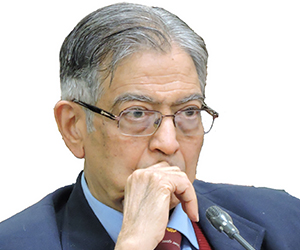

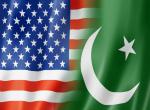

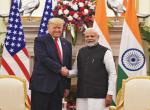
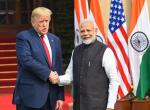
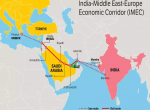
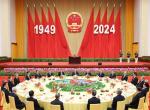
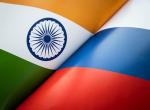
Post new comment